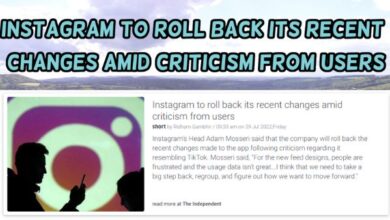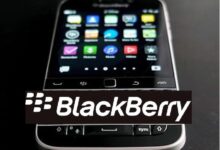
Beacons are now one of the best common methods to connect customers across sectors, particularly in business and marketing, since they are cost-efficient, simple to implement, and plainly successful.
What Is Beacon Technology?
The majority of beacons are little pcs about the size of a Wi-Fi server.
Beacons, which are used in interior and exterior positioning applications as well as Internet of Things (IoT) networks, employ nearby technology to track human impact nearby and initiate pre-programmed activities to give informative, contextual, and customised experiences.
How Do Beacon Work?
Whenever a user passes by a location with a navigation system or even an IoT network using beacons, the closest beacon transmits a signal to their smart phone with a text. The text is then shown as a notice on the user’s smartphone via a 3rd party or branded application.
To Enable A Beacon-Based Control System,
You’ll Need Three Things:
- There should be at least another one beacon instrument.
- App for mobile devices
- Permission granted by the user
A software development kit (SDK), back end administration tools, and beacon phones are often included in beacon technology packages.
As a result, software developers will be required to build up your navigation system, especially if beacons are part of a bigger IoT network with other products.
In terms of user authorization, it is up to users to decide not whether want to get beacon-based alerts and utilise location service.
Because beacon technology only functions with a cellphone and a mobile device, customers may easily off Bluetooth. Some individuals utilize cellphones without turning on Bluetooth all of the time.
To achieve this target, and may encourage consumers to switch on Bluetooth for a better user experience, or you can also entice by informing them about the beacon-based navigation system, offering it as an effective idea, and describing the advantages.
Bluetooth Beacon Technology (BLE)
Bluetooth Low Energy (BLE) is used in beacon technology to send out text at periodic basis. BLE is a low-power Bluetooth standard created for Implementations and phones such as beacons.
A beacon using BLE only requires one coin phone battery every 3 yrs, as well as the tech is 60 to % less expensive than traditional Bluetooth. Beacons come in a variety of shapes and sizes.
For whatever kind and scale of navigation system, there is indeed a large range of beacons accessible. They differ in terms of dimensions, battery capacity, usage applications, and external environmental resistance.

The Following Are The Most Popular Types Of Beacons
For Standard Beacon
Proximate solutions and interior tracking, typical beacons (objects the size of a Wi-Fi router or smaller) are used.
Portable Beacon
Asset monitoring and proximity options with a portable/small beacon (the size of a bank card or a large label).
USB Beacon (compact, transportable, quick to deploy)
Asset monitoring and proximity services using beacons the size of a memory stick.
Video Beacons
Video beacons are devices that are connected into the backside of a display and are used to offer situational visual data and for digital advertising.
AI Beacon
A gadget that uses machine learning to recognise various motions and motions.
Sticker Beacons
Sticker beacons are the tiniest beacons that are used to monitor assets.
The Parent Beacon (About The Size Of A Large Wi-Fi Router)
It is being used to monitor other beacons, gather information, and save it in the cloud, among other things.
Dedicated Beacon
Indoor tracking and approach solutions in difficult settings require dedicated beacons that are resistant to external influences (dust, water, breaking, antistatic, and UV).
Most of the beacon technology’s birth to meet the commercial demands of various organisations, thus new ones may develop in the future, providing companies with additional possibilities to engender loyalty.
What Are The Functions Of Beacons?
Beacon technology can help practically any firm satisfy consumers on the front and the back sides, by streamlining operations and gathering data, generating revenue, and delivering digital experiences.
However, because beacons are nearly tailor-made for the sales and commercial sectors, they help them the most.
Business’s Front And Back End
For example, in a department shop, you may use beacons in conjunction with a bespoke software to alert customers to limited-time in-store discounts, send targeted promotions, as well as provide guidance in large stores.
Beacons are just as powerful on the back end.
Marketing Is Elevated by Beacons
Businesses and their sales department are increasingly relying on developing technology to connect and reach the customers. Small, concealed beacons may have a limited application, but they can have a massive effect.
RedBull, for example, utilised beacon stickers to track the activities of attendees at a music festival. To begin, the gadgets gathered several sorts of data. The data was then utilised by researchers to develop algorithms and convolutional neural networks to better comprehend audiences’ motions and power requirements.
Other Marketing Applications
A New Way To Increase Sales
You may use beacons in conjunction with smartphones to provide highly targeted position adverts.
Another Method Of Data Collection
Beacons may collect consumer data and provide extra information into client behaviour, allowing you to develop better, more personalisation.
Customers Will Have Unique And Fresh Interactions
Some forms of beacons, like RedBull’s beacon stickers, allow for a lot of experimentation and development of innovative solutions which clients will recall for a long time.
Other Businesses That Might Benefit From Beacon Technology Include
- Hospitality (navigation, gamification, smart hotel rooms)
- Sporting events (navigation on big arenas, proximity marketing)
- Warehousing and logistics (asset tracking, security)
- Development of smart homes (beacons can provide navigations to guests at vast properties; security)
- Work on the building (geofencing perimeters for projects in the middle of nowhere)
- Occurrences (gamification, navigation, schedule notifications)
Beacon Technology Pros and Cons
| Pros: | Cons: |
| Low cost. | Users may opt-out |
| Easy to adopt. | A mobile app is a must |
| Tailored-made customer experiences. | Creating a beacon solution is not ubiquitously easy |
| Reliability and scalability. | Na |
| Vast outreach | Na |
| Easy implementation. | Na |
Conclusion
Beacon resemble tiny gadgets with a processor, and batteries. They communicate IDs to adjacent smart phones using Wi-Fi or Bluetooth Low Energy technologies.
A unique ID number is included in the identification, which is recognised by smart phones. Whenever a mobile user comes close to a beacon phone, the device gets a unique beacon identification, which may include adverts, links, or execute any activity the beacon phone has been set to do.






